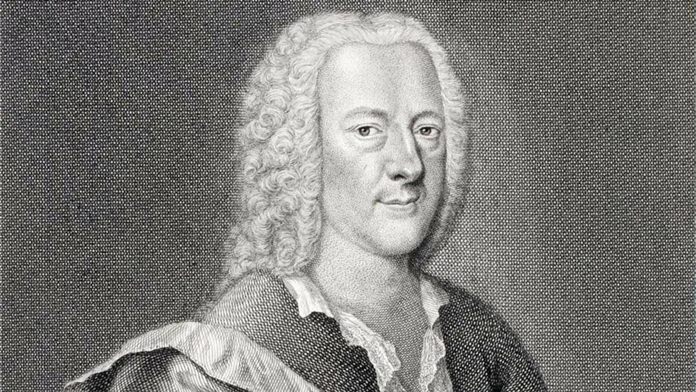
Right then, sit up and pay attention. Without fumbling to look up Google, give me the names of three baroque composers within five seconds. The chances are that you might come up with Bach, Handel and Vivaldi. There were hundreds of others of course, most of which have fallen into oblivion and some of them for good reason. If you could transport yourself back to the Germany of the 1720s and ask a similar question you’d get a different answer. The name on everyone’s lips was Georg Philipp Telemann. He was one of the most powerful and influential musicians in Germany.
He was born in 1681 into a religious middle-class family in Magdeburg, a sprawling medieval town on the banks of the River Elbe. Telemann was virtually self-taught and today would probably be considered a child prodigy. He taught himself several instruments and began writing arias, motets and instrumental works, completing his first opera at the age of twelve.
Despite this remarkable talent, his mother did everything possible to discourage him, having been influenced by the joyless Puritan Lutherans who prohibited musical activities. At one point, this hopelessly misguided woman confiscated the boy’s musical instruments and commanded him to stop composing altogether. At about the age of twelve Georg was packed off to a school in Zellerfeld but the head teacher, to his eternal credit, recognised the boy’s extraordinary talents and provided much-needed encouragement.
In 1702, at the age of twenty-one, Telemann became director of the Leipzig Opera and over the next few years he wrote several operas for the company. He held some of the most prestigious jobs available and evidently had a good sense of humour and a likable personality. Handel and Bach were among his personal friends, although Telemann’s salary was about three times higher than that of Bach. Even then, opera was more profitable than religion.
Telemann is one of the most prolific composers of all time. He wrote over a thousand church cantatas, a couple of dozen concertos, nearly fifty settings of the Passion and fifty operas. It’s been estimated that in all he produced over three thousand musical works.
So what happened? Why was one of the baroque’s brightest stars neglected for so long? Well, in the twilight years of the eighteenth century baroque music simply fell out of fashion. It was replaced by the lighter styles like the music of Haydn and Mozart. The music of Bach was not rediscovered until the 1850s, a hundred years after his death. He was hailed as a master of the baroque at the expense of other composers of the period. It wasn’t until the middle of the twentieth century that a renewed interest in Telemann’s music emerged.
This work contains many Telemann trademarks. One of them is his energetic string-writing using repeated notes. You can hear the effect in the solo viola part at around 04:09 but it occurs often in the work. Telemann was the only Baroque composer I know of who used this effective trick. It brings an almost folksy quality to the sound. There’s a constant interplay between the various string parts and in the slow movement there are lovely phrases exchanged between the strings and surprising harmonies which must have seemed very “modern” to eighteenth century ears.
The last movement fairly belts along, perhaps a little faster than the players would have wished but the performance is exhilarating. The instrumentation is pretty well what Telemann might have heard himself.
In 1740, Telemann estimated that he’d already composed six hundred suites. Only about a quarter of them have survived and this is a splendid example of Telemann’s string writing, quite different in style from that of Bach and Vivaldi.
This seven-movement suite is composed of popular dances. After the opening overture we hear a selection of dance including a bourée, gigue and minuet. Telemann’s music is intensely rhythmic, enormously varied, with bubbling energy and a seemingly limitless display of musical ideas. Just listen to the rich sonorous opening bars, and his use of the so-called “pedal bass” in which the other instruments play short phrases over a low note in the bass sustained for about 22 seconds. The bustling contrapuntal movement (at 03:37) sounds almost Bach-like but with a lovely lightness of touch.
The other dance movements are equally light and airy and demonstrate that this is a composer who knows what he’s doing. However, much of Telemann’s music remains undiscovered. It’s been estimated that half of his works have been lost. How many other examples of his wonderful music are still in existence is really anyone’s guess.
 |
 |
 |





